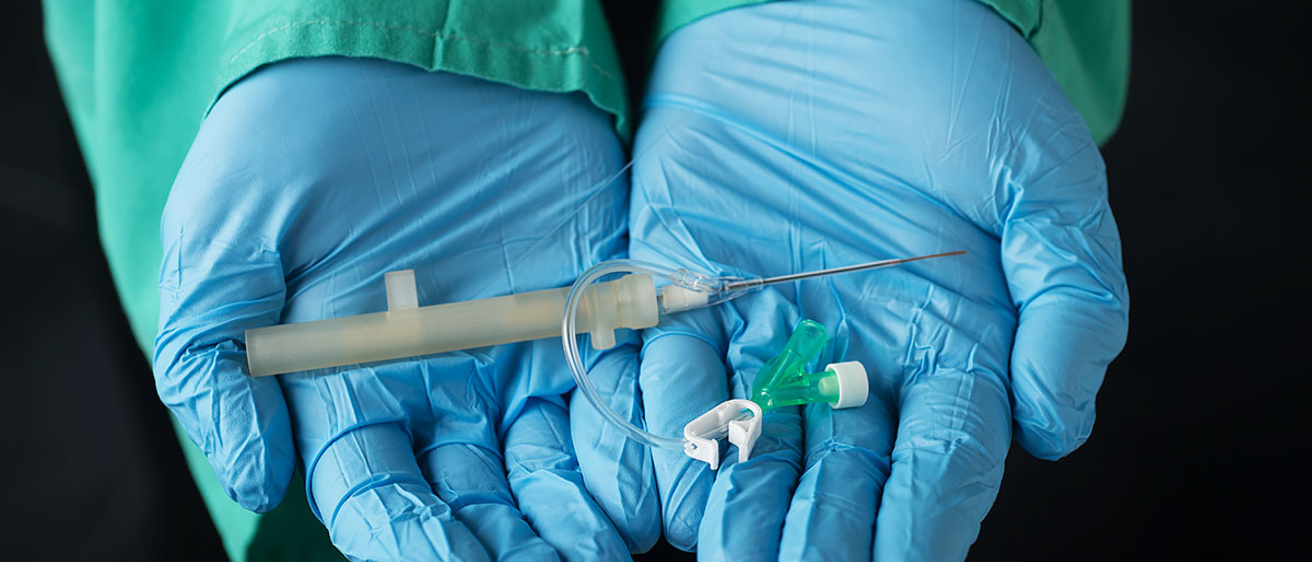A new University of Iowa invention aims to make patients feel less like human pincushions when it comes to IV needles, while creating a technology that could be a significant player in the global health care market.
The Segmented Stabilization System was invented by a multi-disciplinary team led by Robert Anderson, a registered nurse in the intensive care unit of UI Hospitals and Clinics. The device uses a flexible guide wire to direct a catheter into a blood vessel in a way that protects the vessel's interior wall from being broken. The team hopes this will limit unsuccessful IV placement attempts and decrease the number of pokes for patients.
The technology behind the device was recently licensed by the University of Iowa Research Foundation, part of the UI Office of Research and Economic Development, to a company based in Shanghai that will bring the device to market in China after receiving regulatory approval in that country.
“The university is excited to see innovative medical technology like this developed here at the University of Iowa make its way to the global market,” says David Conrad, UI assistant vice president for economic development. “Our office works to support and create a culture of entrepreneurship at the university, creating a framework for economic progress for the state of Iowa in the 21st century global economy.”
Conrad says the device is one example of the UI helping to bring inventions from university faculty and staff to market. He says the UIRF executed 40 options and licenses in fiscal year 2015, a 25 percent increase over the previous period. Many of those are also for global markets.
Zev Sunleaf, UIRF executive director, says UI technology is regularly marketed to companies in and outside of the United States, depending on the need for the product. In some cases, he says, international markets prove more receptive than U.S. markets, which is what happened with this device.
However, Sunleaf said that with further development and use outside of the country, data may be gathered that would make regulatory approval in the United States more likely and, in turn, increase commercial interest here.
Anderson says the concept for the device arose out of his own difficulty inserting IV catheters, a difficulty shared by other nurses, both experienced and novice. Looking for a solution, he went to the Iowa Medical and Innovations Group (IMIG), a campus-wide program that pairs UI students with medical professionals who have identified a need for a medical device. IMIG is co-sponsored by the John Pappajohn Entrepreneurial Center, Henry B. Tippie College of Business, Carver College of Medicine, the College of Law, and the College of Engineering.
Anderson says Tippie marketing students helped determine whether there was a market for such a device, including a survey of 100 UI Hospitals and Clinics nurses that found a patient is typically poked 2.4 times before an IV catheter is successfully inserted. Law students worked on intellectual property, engineering students designed the device, and a prototype was provided by local Iowa City jeweler M.C. Ginsberg.
Anderson says that while there are some similar products on the market, the UI team set out to develop a more cost-effective device tailored to peripheral, thin-walled veins. He says the timeline to the global market is within the next couple of years, and it’s likely the company will seek approval to bring it to market in the United States.
Anderson and his team also launched BloodWorks LLC to further develop this technology, as well as other devices that provide direct solutions to problems or limitations of current devices observed from real-world practice. BloodWorks is made up of a multi-disciplinary team, including biomedical engineers, attorneys, a physician, and a nurse.
